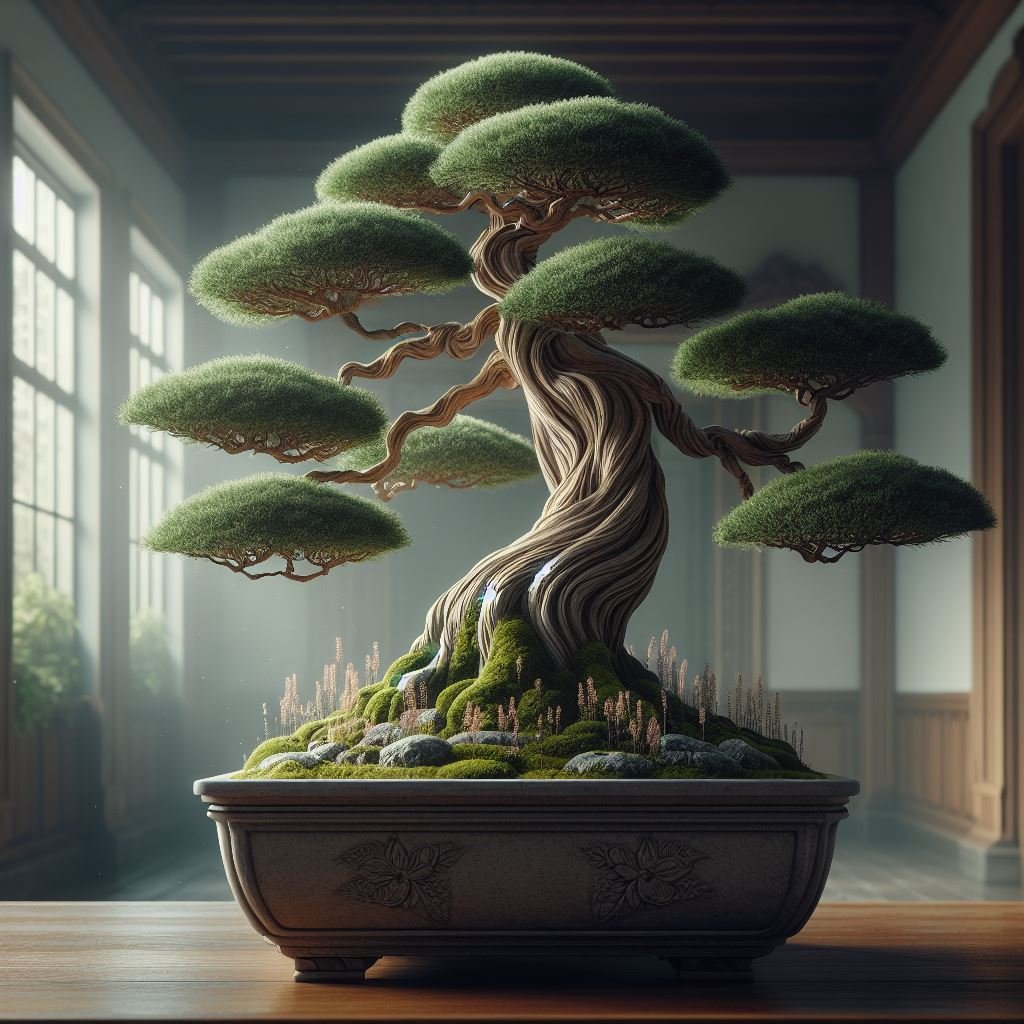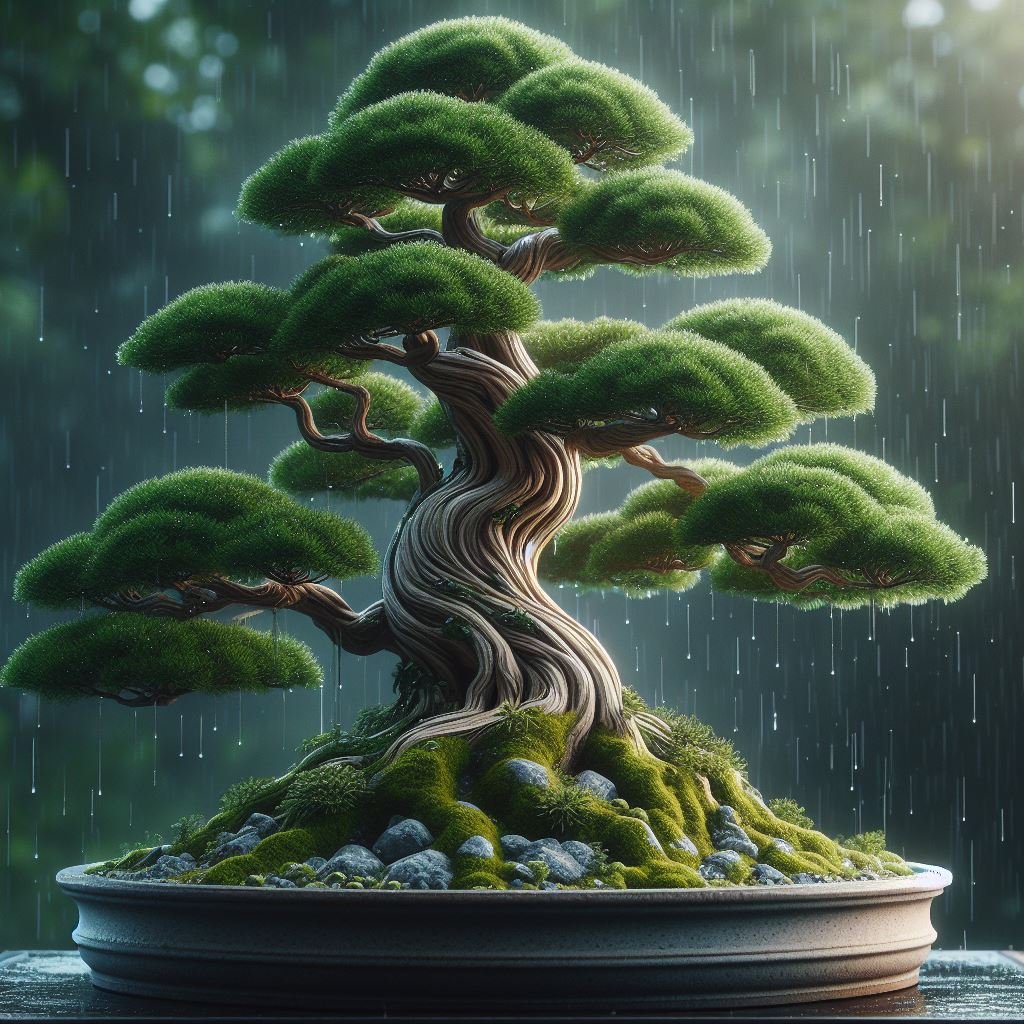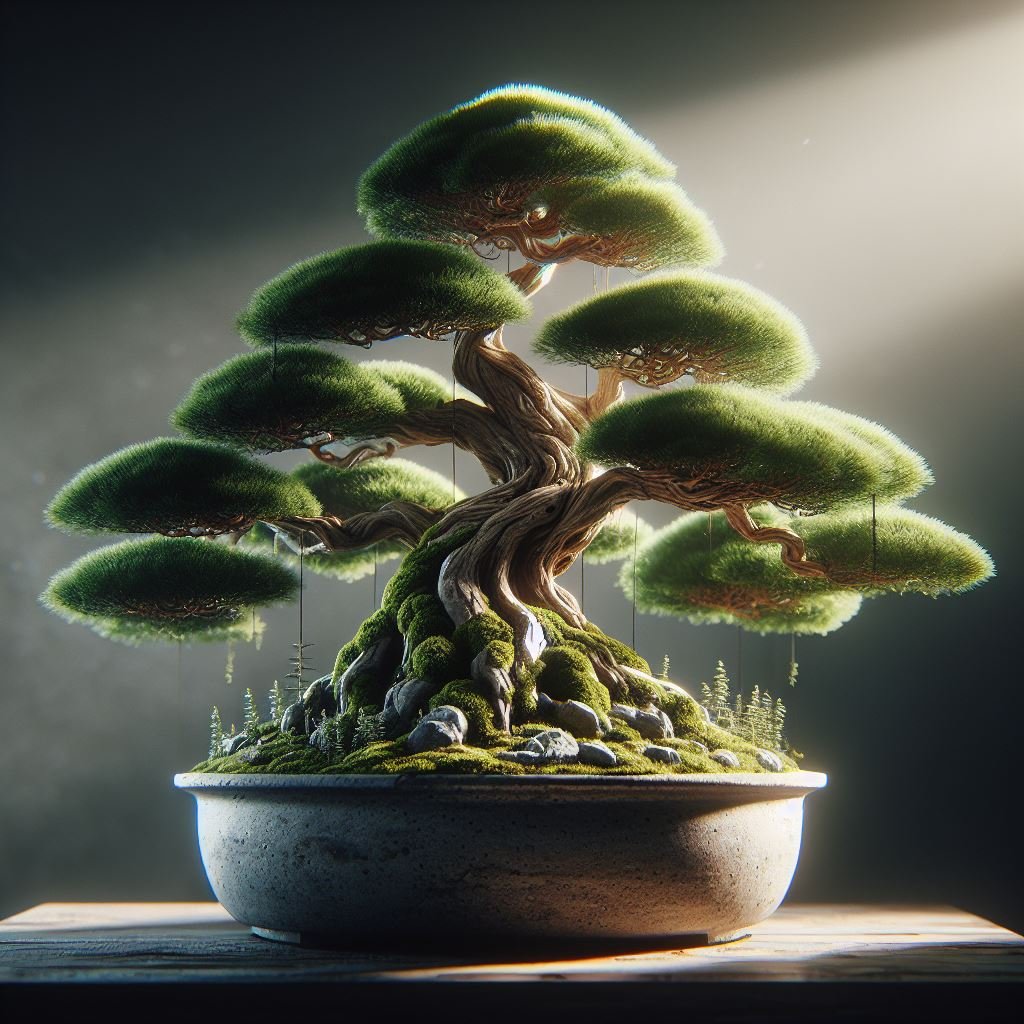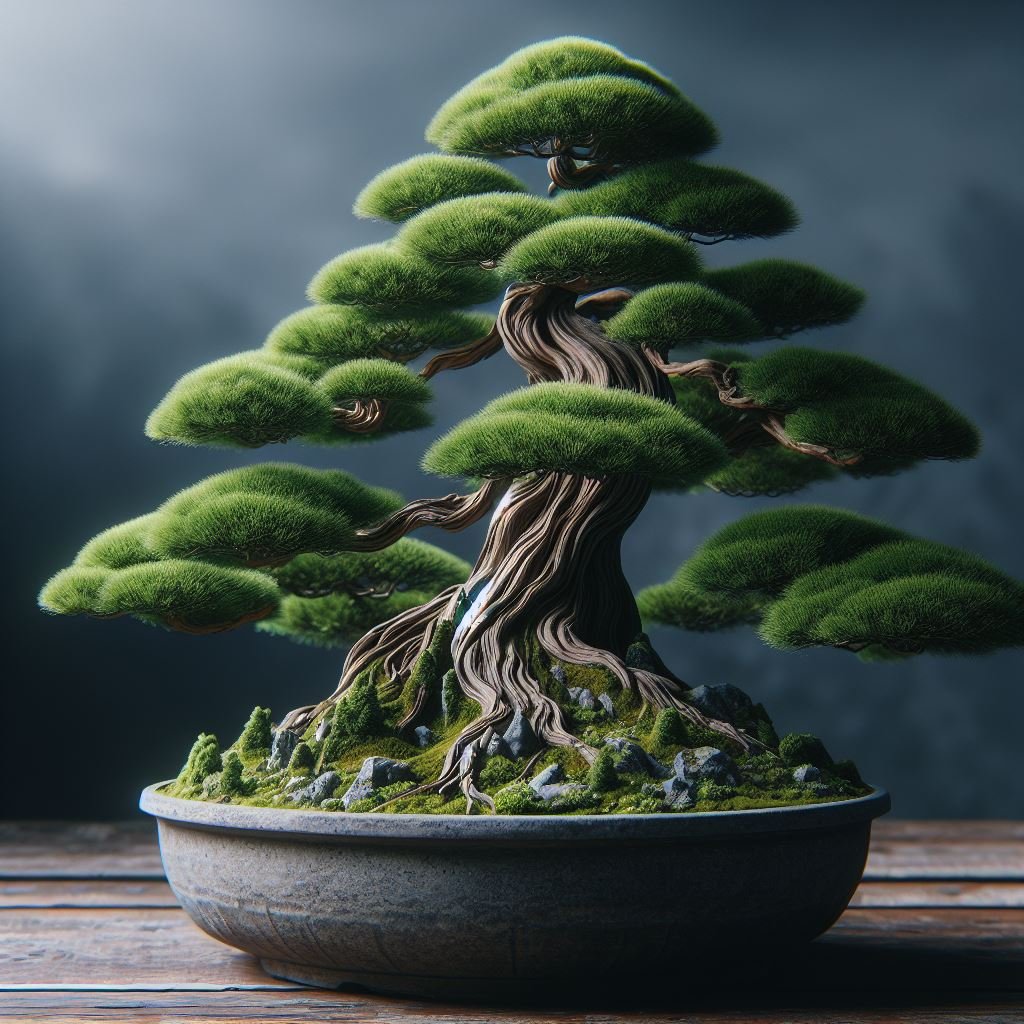Discover the allure and intricacies of creating and nurturing a Monterey Cypress bonsai tree, an evergreen species native to California. With its fast growth and unique form, the Monterey Cypress has become a favorite among bonsai enthusiasts around the world. In this comprehensive guide, we’ll delve into the history, progression, and care techniques of this magnificent tree, giving you all the knowledge you need to cultivate your own Monterey Cypress bonsai.
Introduction
The Monterey Cypress bonsai is a captivating miniature tree that has charmed bonsai enthusiasts and horticulturists alike with its distinct appearance and unique growth pattern. Native to the coastal regions of California, particularly the Monterey Peninsula, this evergreen species is known for its fast growth, resilience, and dramatic, windswept form.
In the world of bonsai, the art of creating miniature trees in pots, the Monterey Cypress holds a special place. Its natural tendency to develop thick trunks and branches makes it an ideal candidate for bonsai, as these features lend themselves well to the creation of a miniature yet realistic tree. Furthermore, the tree’s ability to withstand heavy pruning and shaping makes it a favorite among beginners and experts alike.

The Monterey Cypress bonsai is not just a plant; it’s a living sculpture, a piece of art that evolves over time. Each tree tells a story, reflecting the care, patience, and dedication of the artist. The bonsai community values the Monterey Cypress not only for its aesthetic appeal but also for its role in promoting the art of bonsai and fostering a deeper connection with nature.
Indeed, the Monterey Cypress has become more than just a tree in a pot. It represents the fusion of art, nature, and culture – a testament to the timeless appeal of bonsai. It continues to inspire artists and captivate audiences, reinforcing its importance in the bonsai community.
History and Origin of Monterey Cypress Bonsai
The Monterey Cypress, scientifically known as Hesperocyparis macrocarpa or Cupressus macrocarpa, has a rich and fascinating history. This coniferous tree is native to the coastal regions of California, particularly the Monterey Peninsula, where it thrives in the area’s mild climate and sandy soil.
Interestingly, Monterey Cypress trees were among the first non-native trees brought to Southern California by early settlers in the mid-1800s. The species adapted well to its new surroundings and grew rapidly, capturing the attention of local horticulturists and bonsai enthusiasts.
The art of bonsai, which involves growing miniature trees in pots, originated in China and Japan but has since spread worldwide. The Monterey Cypress became a popular choice for bonsai due to its fast growth, resilience, and unique, windswept form. Notably, one of the earliest recorded Monterey Cypress bonsais was started by Katsumi Kinoshita around 1950, marking the beginning of the tree’s journey in the world of bonsai.

The Monterey Cypress bonsai’s popularity further increased when a mutation of the species, known as ‘Goldcrest,’ appeared in Treseder Nursery in Cornwall, England, in 1948. This variant, known for its golden foliage, added another layer of visual interest to the already captivating Monterey Cypress bonsai.
Today, the Monterey Cypress bonsai is appreciated not just in its native California but globally. Bonsai artists around the world cultivate these trees, drawn to their dramatic forms and the challenge they present. Whether displayed in a traditional Japanese garden or featured in an international bonsai exhibition, the Monterey Cypress bonsai stands as a testament to the enduring appeal of this art form.
Cultivating Your Own Monterey Cypress Bonsai
Cultivating a Monterey Cypress bonsai is a rewarding endeavor that requires understanding its growth pattern and providing the right care.
Understanding the Growth Pattern of Monterey Cypress
The Monterey Cypress is a fast-growing tree, capable of reaching heights of up to 70 feet in nature. However, when cultivated as a bonsai, its growth is controlled through careful pruning and shaping. This evergreen species exhibits a unique growth pattern, often developing a windswept form due to the coastal winds in its native habitat.
The tree’s foliage is dense and dark green, with leaves arranged in scale-like pairs. The trunk and branches thicken rapidly, making them ideal for creating the illusion of age in a bonsai. Monterey Cypress also tends to produce ‘knees,’ or protrusions from the roots, which can add character to your bonsai.
Detailed Care Guide for Monterey Cypress Bonsai
Light: Monterey Cypress bonsai needs plenty of sunlight. Position your tree where it will receive at least six hours of direct sunlight each day.
Watering: While the Monterey Cypress is tolerant of dry conditions, it’s essential to keep the soil slightly moist. Water your bonsai thoroughly whenever the top layer of soil feels dry to the touch. However, avoid waterlogging as this can lead to root rot.
Soil: A well-draining soil mix is crucial for Monterey Cypress bonsai to prevent waterlogged conditions. A mix of loam, peat moss, and sharp sand or perlite can provide the right balance of moisture retention and drainage.
Pruning & Shaping: Regular pruning helps control the tree’s size and shape. Prune new growth during the growing season to maintain your desired form. The Monterey Cypress is highly tolerant of heavy pruning, allowing for creative shaping. Wiring can be done to guide the tree’s growth, but caution should be taken as the branches can be brittle.
Feeding: Feed your Monterey Cypress bonsai with a balanced bonsai fertilizer during the growing season to support healthy growth.
Repotting: Repot your bonsai every two to three years, or as needed depending on its growth rate. This provides an opportunity to trim the roots and refresh the soil.
Diseases & Pests: Monterey Cypress bonsai can be susceptible to pests like aphids and scale insects, and diseases such as cypress canker and root rot. Regularly check your tree for signs of these issues and treat them promptly.
Remember, the art of bonsai is about patience and continuous learning. Enjoy the process of nurturing your Monterey Cypress bonsai and watch it grow into a living work of art.
Real-Life Inspirations: Monterey Cypress Bonsai Progressions
The Monterey Cypress bonsai is a remarkable tree that can transform from a tiny seedling to a show-ready work of art in just a few years. Several bonsai enthusiasts have documented their progressions, showing the fascinating journey of these trees.

Case Study: From Seed to Show-Ready Bonsai Tree in 9 Years
One notable example is a Monterey Cypress bonsai grown from seed in 2007. Over nine years, the tree was carefully nurtured and shaped into a stunning bonsai. The progression showcases how rapid the growth of a Monterey Cypress can be and how it can be successfully trained into a bonsai form.
This particular Monterey Cypress bonsai underwent various stages of development, from initial planting to repotting, pruning, wiring, and finally, exhibiting. Each stage required careful attention and adjustment according to the tree’s growth and health. This case study serves as an excellent guide for those interested in cultivating their own Monterey Cypress bonsai.
Notable Monterey Cypress Bonsai Examples and Their Stories
Several Monterey Cypress bonsais have gained recognition in the bonsai community. For instance, “Cypress by the Sea” is a famous Monterey Cypress located in Carmel, CA. This tree’s distinct shape and location, growing just 20 miles south of Monterey, make it a striking example of the species.
In another example, a bonsai enthusiast shared their process of growing Monterey Cypress seedlings from seed on a bonsai forum. This thread provides valuable insights into the early stages of Monterey Cypress bonsai cultivation, from germination to initial pruning and shaping.
On the Mirai Forum, a user discussed the repotting process of Monterey Cypress cuttings, offering advice on the best practices for this crucial step in the bonsai journey.
These real-life examples not only inspire but also provide practical guidance for cultivating your own Monterey Cypress bonsai. Remember, patience and persistence are key in the art of bonsai.
Sources:
- Monterey Cypress Progression: From Seed to Show in 9 Years ↩
- Golden Monterey Cypress ↩
- Monterey Cypress Seedlings – process from seed ↩
- Monterey Cypress cuttings – repotting ↩
Appreciation and Preservation of Monterey Cypress Bonsai
The Monterey Cypress is a highly sought-after tree for bonsai cultivation due to its unique features and visual appeal. Here are some of the characteristics that make it a favorite among bonsai enthusiasts:

Unique Features of Monterey Cypress Bonsai
Distinct Growth Habit: The Monterey Cypress is known for its distinct growth pattern. In nature, it often develops a windswept form due to coastal winds. This makes it an ideal species for creating dramatic and visually stunning bonsai trees.
Rapid Development: Monterey Cypress grows quickly, which is an advantage when cultivating bonsai. A tree can go from seed to show-ready in just a few years.
Thick, Hardy Foliage: The foliage of Monterey Cypress is dense, dark green, and hardy. This allows the tree to withstand heavy pruning and shaping, essential elements of bonsai cultivation.
Versatility in Design: The Monterey Cypress can be trained into various shapes. As Eric Schrader points out in a video on YouTube, the design and clean-up of Monterey Cypress bonsai differ from work done on Juniper bonsai.
The Role of Bonsai Enthusiasts in Preserving Monterey Cypress
Bonsai enthusiasts play a key role in preserving the Monterey Cypress. By cultivating this tree as a bonsai, they help maintain its genetic diversity outside its natural habitat. They also raise awareness about the species and its conservation needs.
The practice of bonsai also contributes to the preservation of Monterey Cypress by fostering an appreciation for this tree. Bonsai exhibitions and online communities provide platforms for enthusiasts to share their experiences, learnings, and inspirations related to Monterey Cypress bonsai.
By continuing to grow and nurture Monterey Cypress bonsai, enthusiasts ensure that this remarkable tree continues to thrive and inspire future generations.
Sources:
- Golden Monterey Cypress ↩
- From Seed to Show in 9 Years – Monterey Cypress ↩
- Monterey Cypress (Macrocarpa) Bonsai Care Guide ↩
- Why Grow Monterey Cypress Bonsai? – YouTube ↩
- Observances of Perlite in Monterey Cypress Grow Out Pot ↩
- A little Cypress inspiration (Monterey Cypress I believe) ↩
Conclusion
In conclusion, the Monterey Cypress provides a unique and rewarding experience for bonsai enthusiasts. Its distinctive features, rapid growth, and versatility in design make it a standout choice for cultivation. Moreover, the role of bonsai cultivators in preserving the Monterey Cypress and promoting its awareness cannot be overstated. As we continue to appreciate and nurture these remarkable trees, we contribute to the preservation of their species and enrich the diverse tapestry of bonsai artistry. From seed to exhibition, the journey of a Monterey Cypress bonsai is a testament to the harmony of nature and human creativity.
Frequently Asked Questions
How fast does a Monterey Cypress grow?
Monterey Cypress is known for its rapid growth rate. In ideal conditions, it can grow from seed to a show-ready bonsai tree in just a few years.
What kind of care does a Monterey Cypress bonsai require?
Monterey Cypress bonsai requires regular watering, appropriate sunlight exposure, and frequent pruning to maintain its shape. It’s also important to repot them every couple of years to ensure healthy root development.
Where can I get a Monterey Cypress bonsai?
Monterey Cypress bonsai trees can be purchased from bonsai nurseries or online stores. You can also grow one from seed or a cutting, although this process requires more time and patience.
How can I contribute to the preservation of Monterey Cypress?
By cultivating Monterey Cypress bonsai, you help maintain its genetic diversity outside its natural habitat. Participating in bonsai communities, exhibitions, and forums also helps raise awareness about this tree and its conservation needs.
Can Monterey Cypress bonsai be grown indoors?
While Monterey Cypress can adapt to a variety of environments, it generally prefers outdoor conditions. If you choose to grow it indoors, ensure it receives plenty of light and fresh air to thrive.
Sources:
- Golden Monterey Cypress
- Monterey Cypress Progression
- Monterey Cypress Bonsai Community
- Appreciation for Monterey Cypress
- Monterey Cypress at Bonsai Mirai
- Monterey Cypress (Macrocarpa) Bonsai Care Guide
- Monterey Cypress Bonsai on Etsy





